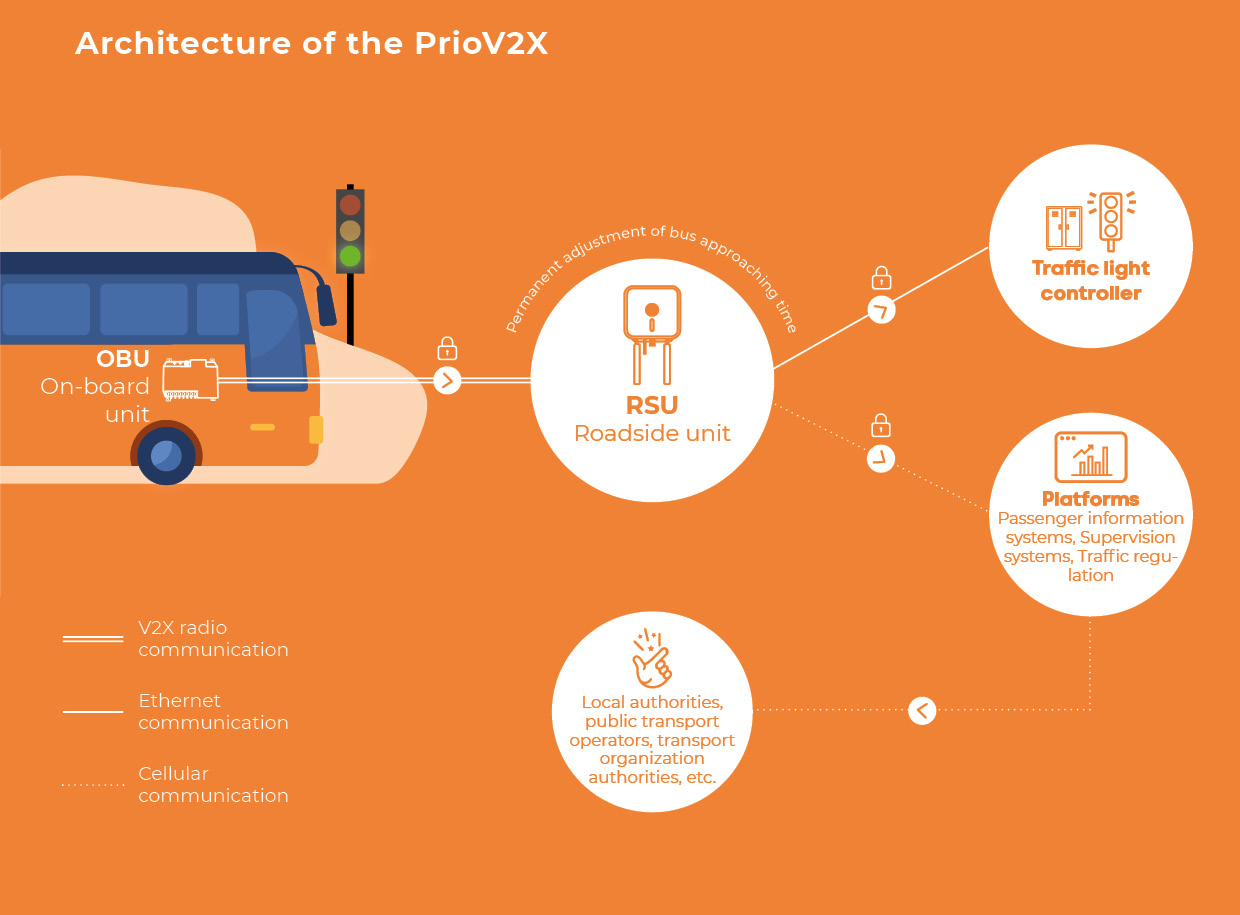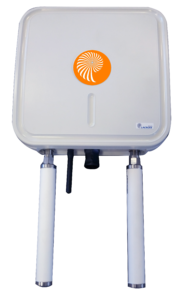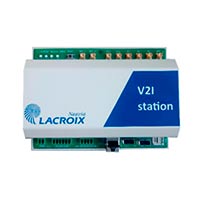The public transport priority principle makes it possible to give priority to vehicles identified as such at traffic lights. Public transport plays a fundamental part in smart cities and territories.
How does it work?
Priority to public transport, step-by-step
When the bus arrives at an intersection, its on-board unit transmits the vehicle’s geolocation to the roadside unit via V2X.
Installed on top of the traffic light, the OBU continuously adjusts the approaching times according to the bus’ location, and transmits the request for priority to the controller.
The data generated by the system are made available to be used by traffic management systems and the Operation Assistance System (OAS).

Plunge into the heart of an innovative system

V2X, or Vehicle-to-Everything, technology endows connected vehicles with capabilities to exchange with their environments, making them interoperable, in a cybersecure framework. Because it enables real-time, standardized sending of messages (accident notifications, indications of work areas, assistance with crossing intersections, etc.) aimed at improving the safety of users, it contributes to the simple and rapid deployment of the connected vehicle.
Why go with V2X communication?
The communication protocol known as “V2X” fulfills a European standard. This means that different equipment, from different makers, can communicate with one another, thus ensuring the interoperability of the architecture as a whole.
When dealing with intersections equipped with the bus priority system, the exchanges between the module on board each bus and the roadside units installed at the traffic light intersections, take place in real time and bidirectionally.
The advantages
- INTEROPERABILITY
The PrioV2X system interfaces with the traffic light controllers and right-of-way systems already installed.
- QUALITY OF SERVICE
Real-time adjustment of bus approaching time allows for accurate dynamic regulation.
- CYBERSECURITY
Our system is compatible with key public infrastructure and implements an ETSI-compliant security stack.
- FACILITATED COMMISSIONING
Thanks in particular to the self-learning protocol for bus approaching time.
- SCALABILITY
Our open, connected, and scalable system also makes it possible to manage right of way for emergency vehicles, distribute hazard notifications for automated vehicles, and control lighting management on BRT (bus rapid transit) sites.
The benefits
For travelers:
- Shortened journey times.
- Better line regularity.
For the transport operators:
- Greater productivity.
- Fuel savings.
- Reduced CO2 emissions.
For the local authorities:
- Time savings during implementation.
- No major infrastructure works needed.
- Reduced maintenance costs.
Testimonials
Tisséo Collectivités, a public transport operator in the city of Toulouse
Tisséo Collectivités, in a context of population growth in the Toulouse conurbation, is looking to improve the attractiveness and quality of service of its public transport offer by modernizing its network. To take up these new challenges, the operator has decided to go with the LACROIX bus priority management solution.
In an interview on leading French television channel TF1, Mr. LATTES, CEO of Tisséo, and Mr. BARAGIOTTA, bus driver, explained:
💬 “The system will inform the driver in advance. It will be much more interactive with the driver, telling him to slow down a little to avoid the impact with a red light. And so we are going to create fluidity thanks to new features. We are working on a system that I call ‘smart’, much smarter and more contemporary than the old system.”, ensures Mr. Jean-Michel LATTES.
💬 Walter BARAGIOTTA, bus driver, adds: “On a track specially made for buses and with multiple lights, I think we can definitely gain 10 minutes.”
RATP, public transport operator for the City of Paris
The RATP Group officialized the road-launch of its self-driving buses in 2021. To facilitate the crossing of traffic lights along its route, the transport operator invested in LACROIX’s PrioV2X solution. This innovative project came about through the work of three entities:
- RATP: as the public transport operator,
- The company SERFIM: as the installer,
- And the Val-de-Marne Department: as the quality guarantee provider for the roads and all infrastructures.
💬 Mr Nicolas GRAVOUIL, Smart City Project Manager at SERFIM TIC shares: “The installation of the RSUs and EVUs went off without a hitch, in 3 days. The advantage of this system is that there is no need for any cabling between the controller and the RSUs. We just wired up the LACROIX communication module at the foot of the traffic light.”
💬 “With the work around the traffic lights alone, we gained 10 minutes of running time. Before the adaptation to the traffic light we were at 40 min, after the adaptation to the traffic light we were at 30 min”, says Benjamin JOLIVIERE, Autonomous Vehicle Project Manager.






